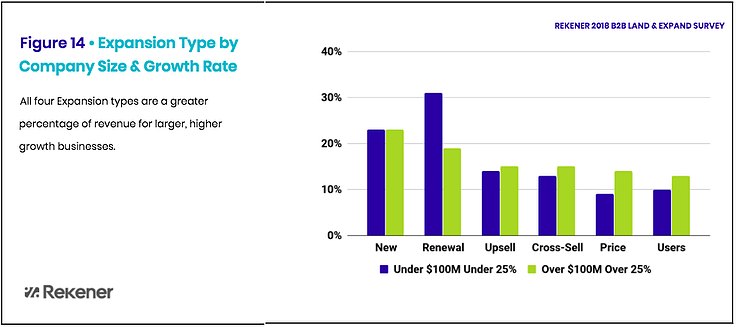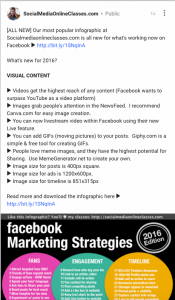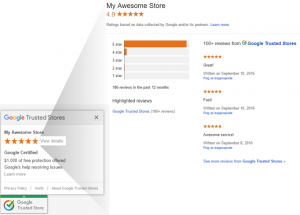Want to win more business from your existing clients? This article shares some strategies to keep clients happy and get more business from them.
In late 2015, Nestle was looking for a new agency partner for a number of its brands, including the iconic Nescafé. After months of searching, the company settled on Ogilvy & Mather.
While Ogilvy’s creative brilliance certainly helped, what helped tilt the deal in its favor was familiarity.
Ogilvy had won Nestle’s Nesquik brand away from McCann in 2012. Another agency might have been an unknown quantity to Nestle, but Ogilvy was familiar and liked.
This is a common theme in the agency business. Land a client, earn their trust, then grab an ever-larger portion of their business.
After all, it’s much easier to sell to someone you know than to someone entirely new.
The question is, how do you win more business from your existing clients? What strategies can you adopt to earn their trust and future marketing budgets?
I’ll share some answers below.
Land And Expand for Agencies
If you’re coming from a sales world, “Land and Expand” would be a familiar term.
For the uninitiated, “Land and Expand” (or L&E) is a sales tactic (some call it a business strategy instead) that focuses on landing a small deal and expanding to a larger deal.
In the agency context, this small deal might be a basic website redesign. Once you bag that, you can expand your way to handling the client’s entire digital strategy.
Land and Expand is particularly suitable for agencies for three reasons:
- Agency sales cycles are long and often have several buyers on the client-side
- Agencies are not limited by product range; if the client has a need, the agency can hire experts for it
- Agency sales happen at the account level, not the product level. You don’t just sell results; you also sell trust to key account people
It also helps that agency deals can start small. In the above Nestle-Ogilvy example, the original deal only covered digital and social creative assets. The range of agency services means that there is usually plenty of room to expand upwards if given the chance.
L&E doesn’t just work on new deals. You can also increase the deal size greatly upon deal renewal. In fact, a study by Rekener found that successful renewal leads to the largest increase in deal size among large businesses.

However, Land & Expand doesn’t just happen by itself – you have to push in the right direction to make it happen.
Adopt these three strategies to do L&E right:
1. Appeal at an emotional level
Outside of small businesses, it’s a rare deal where you’ll have only one decision-maker. Rather, you’ll usually have to sell to a committee of buyers. The bigger the client, the more decision-makers you’ll have to contend with.
Working with a committee of buyers brings group dynamics into play. Your results, while important, get deprioritized. Rather, each person in the group asks questions like:
- How will this deal reflect on me within a) the company, and b) within the group?
- Will this deal help me get a raise/promotion? Are these results tied to something my boss actually cares about?
- What are the chances that this deal can backfire and make me look bad?
Land & Expand can be a double-edged sword in such a situation. You’ll easily overcome the initial trust deficit since you’re already known to the group. On the other hand, some might feel threatened, especially if you’re perceived to be close to a few members.
Solve this problem by appealing to emotion. While benefits certainly matter, your goal should be to win over clients at an emotional level. Focus on their specific individual anxieties within a) the immediate group and b) the company as a whole.
Your messaging can take two forms:
- Trust-focused: Positive messaging that leverages your existing trustworthiness. The focus would be on risk mitigation (“this won’t go wrong, trust us”), especially when selling to risk-averse large businesses.
- Fear-focused: Negative messaging that leverages the buyers’ fear that competitors might overtake them. Fear-focused messaging works better at a group level since losing to a competitor makes everyone look bad.
With a fear-based messaging, research shows that you’ll see better results with a high fear approach that adds a dollar cost to the fear.
For instance, in one split test, the subject line on the left which had a dollar cost associated with it outperformed the other by 65%.

Your marketing needs to be inspirational and aspirational. You need to reassure stakeholders that nothing can go wrong (especially to risk averse enterprise marketers). Instead of just new, focus on new and safe.
2. Refocus your marketing collateral
Succeeding with the Land and Expand model requires a shift in mindset. Agencies are often happy to sell once and serve out the terms of the contract. But in an L&E model, you need to always keep one eye on the next deal.
This requires two things:
- Constantly looking out for new projects and opportunities for your clients
- Creating marketing collateral that showcases your expertise in exploiting above opportunities
We’ll cover #1 in the next section.
For #2, however, you need to invest in strong tracking, relationships, and follow-up. Every project you deliver is a potential Success Story that can help you win over skeptics. The better you track performance – yours as well as the project’s – the better these case studies would be.
Try to think of each project in the context of such marketing collateral. Ask yourself: How can I narrate the story of this project better? What metrics and results would make the story more believable?
A client might accept your expertise in one area, but if you want to expand to another domain, you’ll have to prove your knowledge again. Focused marketing collateral can be a powerful ally in this endeavor.
3. Understand your clients
Do you understand your clients?
And I mean really understand them?
While most agencies would say “yes” to this question, in reality, they only know a part of their clients’ businesses. They might know their immediate stakeholders, but they’re often clueless about how the rest of the organization works.
This organizational knowledge is also crucial if you want to sell more.
Large businesses are complex organic entities. There are power structures within them that often decide the fate of deals. One manager might not get along with another, a senior executive might feel threatened by an up-and-coming star, and so on.
Breaking out of the mold of your existing deal means understanding these dynamics. You have to know who talks to who, which manager the key decision-maker listens to, and what metrics senior execs care about.
There is no shortcut to learning these dynamics; you have to invest in long-term relationship building. Doing this requires a mindset shift. Don’t see yourself as a one-off project expert. Rather, position yourself as a partner who will be around for years and even decades.
II. Identify Creative Projects for Existing Clients
A common mistake agencies make is waiting for clients to approach them with new projects.
This isn’t a viable approach. Doing good work and passively hoping that new projects fall in your lap is neither sustainable nor scalable.
Rather, you should be willing to find gaps in the client’s marketing and bring new projects for them. Being proactive will help you zero-in on projects you might have otherwise missed.
How do you go about finding new projects for your clients?
Here are some answers:
1. Listen to your clients
The best way to spot new opportunities is to simply keep your ears open.
Has your client mentioned in passing that they’re considering redesigning their website or their business cards? Are they confused about social media and the impact it can have on their business?
These may be areas you can assist with, and by paying close attention to their needs, you’ll be more prepared to offer bonus services down the line.
2. Spot gaps in their marketing
Is there an area where your clients’ marketing clearly lags behind?
Maybe their website looks a little outdated (which is hurting conversions). Maybe their SEO isn’t up to scratch. Or maybe their social media engagement is constantly trending downwards.
Bring up such obvious opportunities and offer your solution. If they already trust your work, they’ll usually be happy to at least listen to your offer.
To succeed with this approach, make sure that you also understand the following:
- Where they have been spending their marketing budget. Is there a clear trend? Are they devoting a larger share to a specific channel?
- Who are the key decision-makers in the company? What is their background and area of focus? Often, decision-makers tend to overemphasize channels they have prior experience in.
- What is the dollar cost of each missed opportunity? Does it align with their larger marketing trend?
For instance, the client might be spending $ 50,000/month on AdWords but languishing at the bottom of page #2 in organic results. Since they’ve already shown a commitment to search, you can pitch them the missed opportunity of ignoring SEO.
It’s crucial that you focus on the business’ trends. Organizations have momentum and inertia. If there is broad organizational buy-in towards a channel or strategy, you’ll find it far easier to sell a service that aligns with or complements that channel.
Unfurl your sails in the direction of the winds, not against them.
3. Keep an eye on the competitors
As I mentioned above, one of the most effective marketing tactics is to focus on the fear of being left behind by competitors.
This can be a great way to identify new projects for your clients. If the competitors are investing in a project with potentially massive upside, you can use that as a motivator for a new deal.
Competitor-focused strategies are particularly effective when pitching to incumbents in intensively competitive markets. Such businesses are wary of losing their position and will usually overspend to build any kind of marketing “moat” around their dominance.
Once again, keep the organization’s trajectory and market trends in mind. Large businesses don’t change strategies suddenly because a competitor came up with a new product. But they might expand their budgets if it aligns with their existing strategy.
Don’t Forget About Referrals
Winning more business from clients isn’t just about finding new projects for them; it’s also about getting them to refer their friends to you.
If you don’t already have a clear referral strategy, now is the time to invest in one. A satisfied client sending his friends your way will be some of the best leads you will ever find.
With the right approach, you can even scale your referrals. In fact, we even wrote an article about it.
Of course, no strategy can be effective if clients aren’t happy with your work. Rule #1, thus, should be to give clients the best possible service and results.
A better agency management system is invaluable in this regard. You’ll not only have a better idea of the agency’s health but also communicate and plan your projects better.
Business & Finance Articles on Business 2 Community
(46)
Report Post



